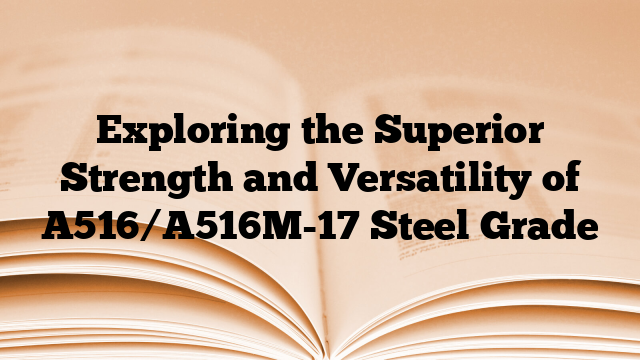To understand the superior strength and versatility of the A516/A516M-17 steel grade, it is important to examine its chemical composition, mechanical properties, and corresponding standard number.
The chemical composition of A516/A516M-17 steel grade typically consists of carbon (0.27%), manganese (0.85-1.20%), phosphorus (0.025%), sulfur (0.025%), silicon (0.15-0.40%), and traces of alloying elements such as copper, nickel, and chromium. This composition provides the steel with excellent weldability and corrosion resistance, making it suitable for various applications in industries such as oil and gas, petrochemical, and power generation.
In terms of mechanical properties, A516/A516M-17 steel grade exhibits superior strength and toughness. It has a minimum tensile strength of 485-620 MPa (70-90 ksi) and a minimum yield strength of 275 MPa (40 ksi). These properties make it highly resistant to fracture, enabling it to withstand high-pressure environments and heavy loads.
The A516/A516M-17 steel grade is standardized by the American Society for Testing and Materials (ASTM) under the standard number A516/A516M-17. This standard specifies the requirements for carbon steel plates intended for moderate- and lower-temperature service. It sets the guidelines for the chemical composition, mechanical properties, and test methods to ensure the quality and reliability of the steel grade.
In summary, the A516/A516M-17 steel grade is known for its superior strength and versatility. With its specific chemical composition and mechanical properties, it offers excellent weldability, corrosion resistance, and high resistance to fracture. Its standardized classification ensures consistent quality and reliable performance in various applications.

